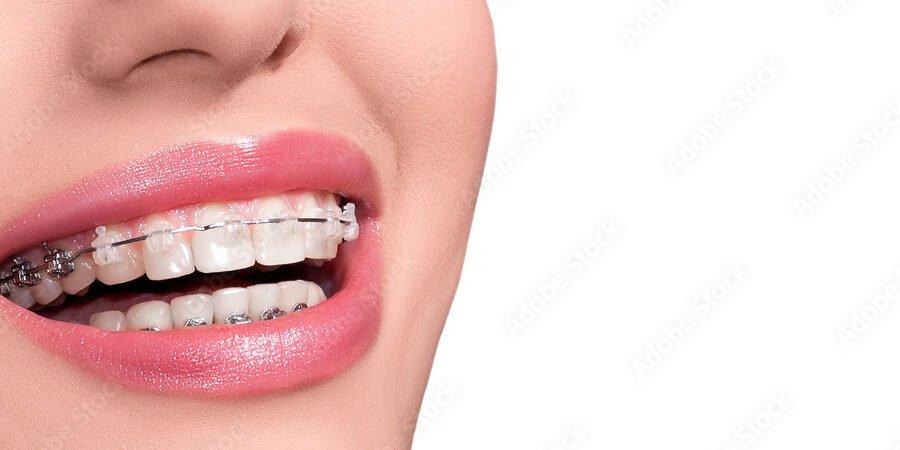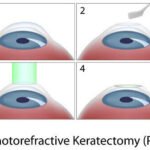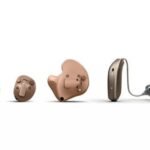Alternatives to Jaw Surgery: TMJ & Overbite Non-Surgical Solutions

Jaw surgery, often seen as a last resort for treating temporomandibular joint (TMJ) disorders and correcting overbites, can be daunting for many patients. The invasiveness, cost, and recovery time associated with surgical interventions drive individuals to seek alternatives to jaw surgery. Fortunately, advancements in dental and orthodontic technology have introduced a variety of non-surgical solutions that can effectively address these issues without the need for surgery. This article explores numerous alternatives to jaw surgery, offering hope and options to those suffering from TMJ disorders and overbite problems.
- Orthodontic Treatment with Traditional Braces
- Clear Aligners like Invisalign
- Dental Splints or Mouthguards
- Physical Therapy
- TMJ Exercises
- Stress Management Techniques
- Muscle Relaxants
- Pain Relievers
- Botox Injections for TMJ Disorders
- Acupuncture
- Occlusal Adjustment (Bite Adjustment)
- Orthopedic Appliances
- Myofunctional Therapy
- Low-Level Laser Therapy
- Biofeedback
- Cognitive Behavioral Therapy
- MEAW (Multiloop Edgewise Archwire) Technique
- TADs (Temporary Anchorage Devices)
- Palatal Expanders
- Functional Appliances
- Electrical Stimulation
- Ultrasound Therapy
- Manual Jaw Manipulation Techniques
Orthodontic Treatment with Traditional Braces
Orthodontic treatment using traditional braces is a well-established alternative to jaw surgery for correcting overbites and improving jaw alignment. By applying continuous pressure over time, braces can move teeth into the desired position, potentially alleviating TMJ symptoms caused by misalignment. This method, while slower than surgical options, offers a non-invasive way to achieve significant improvements in both aesthetics and function.
Clear Aligners like Invisalign
For those seeking a less visible alternative to jaw surgery, clear aligners such as Invisalign present an attractive option. These custom-made, transparent plastic trays are designed to gradually shift teeth into their proper position. Clear aligners are especially popular among adults due to their discreet appearance and the convenience of being removable for eating and cleaning. While not suitable for all cases, they can be an effective solution for mild to moderate overbites and TMJ disorders.
Dental Splints or Mouthguards
Dental splints or mouthguards are often recommended as an initial alternative to jaw surgery for TMJ disorder management. These devices, worn over the teeth, help reduce jaw clenching and teeth grinding (bruxism), which are common contributors to TMJ pain. By creating a physical barrier, splints and mouthguards can also correct bite issues and alleviate pressure on the TMJ, providing significant symptom relief.
Physical Therapy
Physical therapy is a valuable alternative to jaw surgery for those suffering from TMJ disorders. A physical therapist can provide specialized exercises and manual therapy techniques to strengthen the jaw muscles, improve flexibility, and increase the range of motion. This approach not only helps in managing pain and discomfort but also addresses the underlying dysfunction of the TMJ.
TMJ Exercises
Specific exercises designed for TMJ health can serve as an effective alternative to jaw surgery. These exercises aim to strengthen jaw muscles, enhance mobility, and promote relaxation. Regular practice can help in reducing TMJ pain, improving jaw function, and preventing further complications. TMJ exercises are often most effective when combined with other non-surgical treatments.
Stress Management Techniques
Since stress can exacerbate TMJ symptoms by leading to behaviors like teeth grinding, stress management techniques are a crucial alternative to jaw surgery. Practices such as mindfulness, meditation, and yoga can help in reducing overall stress levels, thereby indirectly relieving TMJ pain and discomfort. Stress management is often recommended alongside other treatments for a holistic approach to TMJ disorder management.
Muscle Relaxants
In cases where muscle tension contributes to TMJ disorders, muscle relaxants can be prescribed as an alternative to jaw surgery. These medications help in relaxing the jaw muscles, reducing pain, and improving mouth movement. However, they are typically used for short-term relief and in conjunction with other non-surgical treatments.
Pain Relievers
Over-the-counter and prescription pain relievers are often used as an immediate alternative to jaw surgery for managing TMJ pain. Nonsteroidal anti-inflammatory drugs (NSAIDs) can reduce inflammation and alleviate discomfort. While pain relievers can provide quick relief, they do not address the root cause of TMJ disorders and are usually recommended as part of a comprehensive treatment plan.
Botox Injections for TMJ Disorders
Botox injections have emerged as a novel alternative to jaw surgery for treating TMJ disorders. By temporarily paralyzing the muscles involved, Botox can relieve jaw tension, reduce pain, and decrease the frequency of headaches associated with TMJ disorders. This treatment, however, requires periodic sessions to maintain its effectiveness.
Acupuncture
Acupuncture, a practice rooted in traditional Chinese medicine, offers a holistic alternative to jaw surgery for TMJ disorder management. By inserting fine needles into specific points on the body, acupuncture aims to restore balance and promote natural healing. Many patients report significant improvements in TMJ symptoms following acupuncture treatment.
Occlusal Adjustment (Bite Adjustment)
Occlusal adjustment, or bite adjustment, is a precise procedure aimed at correcting misalignment issues, making it a direct alternative to jaw surgery. By reshaping the biting surfaces of the teeth, occlusal adjustment can reduce stress on the TMJ and alleviate associated symptoms. This treatment requires a skilled dental professional to ensure proper balance and function of the jaw.
Orthopedic Appliances
Orthopedic appliances, such as jaw repositioning splints, offer a targeted alternative to jaw surgery for correcting jaw misalignment and treating TMJ disorders. These devices work by gradually repositioning the jaw into a more natural alignment, relieving pressure on the TMJ and improving overall function. Orthopedic appliances can be particularly effective in cases where structural issues contribute to TMJ symptoms.
Myofunctional Therapy
Myofunctional therapy focuses on the muscles of the mouth and face, promoting proper function and alignment. As an alternative to jaw surgery, myofunctional therapy involves exercises and techniques to correct improper tongue position, swallowing patterns, and breathing habits. This therapy can be especially beneficial for patients with TMJ disorders resulting from muscular dysfunction.
Low-Level Laser Therapy
Low-level laser therapy (LLLT) uses specific wavelengths of light to target areas of the body, including the TMJ, to promote healing and reduce inflammation. As a non-invasive alternative to jaw surgery, LLLT can provide pain relief, decrease swelling, and enhance tissue repair in the affected area. This therapy is gaining popularity for its effectiveness in treating a range of TMJ symptoms.
Biofeedback
Biofeedback is a technique that teaches individuals how to control physiological processes that are normally involuntary, such as muscle tension. For those seeking an alternative to jaw surgery, biofeedback can be particularly useful in managing TMJ disorders. By monitoring the body's responses, patients can learn to relax their jaw muscles, reducing pain and improving function.
Cognitive Behavioral Therapy
Cognitive Behavioral Therapy (CBT) is a form of psychological treatment that can serve as an alternative to jaw surgery for those whose TMJ symptoms are exacerbated by stress, anxiety, or depression. CBT helps patients identify and change negative thought patterns and behaviors, potentially reducing the psychological contributors to TMJ pain.
MEAW (Multiloop Edgewise Archwire) Technique
The MEAW technique is an advanced orthodontic treatment that uses specially designed wires to correct complex dental and skeletal discrepancies. As an alternative to jaw surgery, the MEAW technique can effectively treat severe overbites and malocclusions by applying continuous force to the teeth and jaw, promoting realignment without the need for surgical intervention.
TADs (Temporary Anchorage Devices)
TADs are small titanium screws that are temporarily fixed to the bone to serve as an anchor for moving teeth into their correct positions. This innovative approach offers a powerful alternative to jaw surgery for correcting bite issues and aligning the jaw. TADs can achieve results that were once only possible with surgery, making them a game-changer in orthodontic treatment.
Palatal Expanders
Palatal expanders are devices used to widen the upper jaw, correcting issues such as a narrow palate, which can contribute to overbites and TMJ disorders. As a non-surgical alternative to jaw surgery, palatal expanders apply gentle pressure to the palate, gradually expanding it to improve the bite and jaw alignment. This treatment is often most effective in children and adolescents, whose jaw bones are still developing.
Functional Appliances
Functional appliances are used to correct jaw growth discrepancies by guiding the growth of the jaw in young patients. As an effective alternative to jaw surgery, these appliances can address overbites, underbites, and other jaw alignment issues by harnessing the patient's growth potential. Functional appliances can significantly reduce the need for surgical intervention later in life.
Electrical Stimulation
Electrical stimulation therapy uses low-level electrical currents to stimulate muscle activity and promote healing in the TMJ area. This alternative to jaw surgery can help in reducing pain, improving circulation, and encouraging the relaxation of tense muscles around the jaw. Electrical stimulation is often used in conjunction with other non-surgical treatments for comprehensive TMJ disorder management.
Ultrasound Therapy
Ultrasound therapy employs sound waves to penetrate deep into the tissues surrounding the TMJ, promoting healing and reducing inflammation. As a non-invasive alternative to jaw surgery, ultrasound therapy can provide relief from pain and stiffness in the jaw, making it a valuable tool in the treatment of TMJ disorders.
Manual Jaw Manipulation Techniques
Manual jaw manipulation techniques, performed by trained professionals, can offer immediate relief for TMJ pain and dysfunction. This hands-on alternative to jaw surgery involves carefully applying pressure and movement to the jaw to improve alignment and relieve muscle tension. Manual manipulation can be particularly effective when combined with other therapeutic approaches for a holistic treatment plan.
The quest for alternatives to jaw surgery has led to the development of a wide range of non-surgical solutions for TMJ disorders and overbite correction. These alternatives offer effective relief and improvements without the risks and recovery time associated with surgery. By exploring these options, individuals can find the most suitable approach to address their specific needs, leading to better oral health and overall well-being.





Leave a Reply